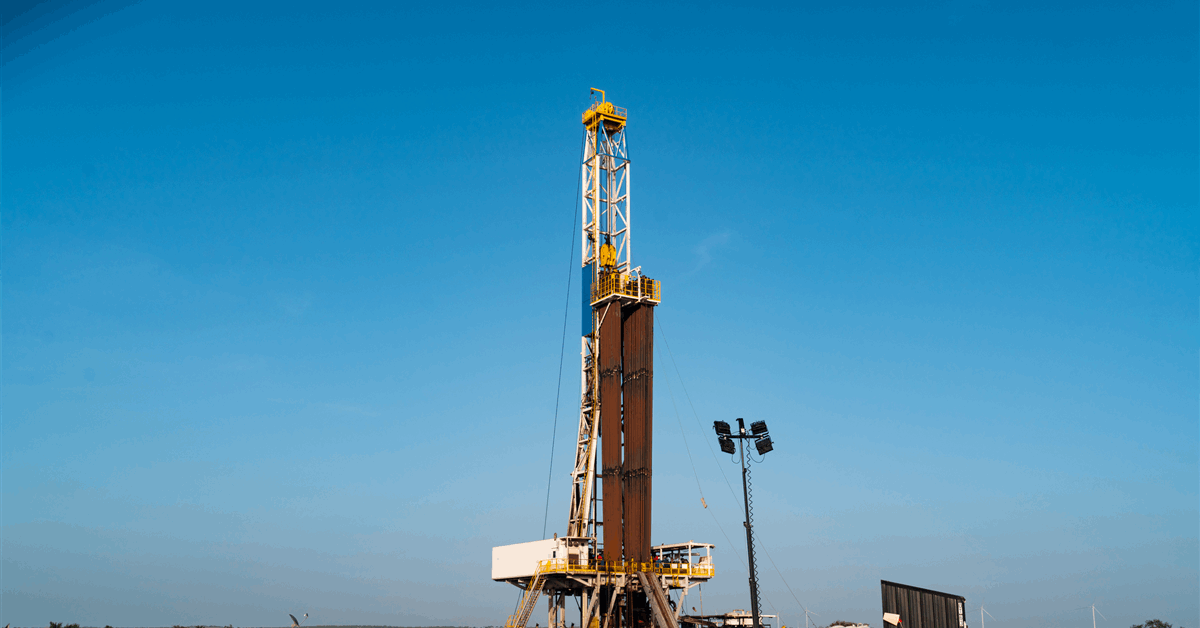
The U.S. Energy Information Administration (EIA) cut its Brent spot average crude oil price forecast for 2025 and 2026 in its latest short term energy outlook (STEO), which was released on August 12.
According to that STEO, the EIA sees the Brent spot price averaging $67.22 per barrel this year and $51.43 per barrel next year. In its previous STEO, which was released in July, the EIA projected that the Brent spot price would average $68.89 per barrel in 2025 and $58.48 per barrel in 2026.
The EIA revealed in its latest STEO that it sees the Brent spot price average coming in at $67.40 per barrel in the third quarter of this year, $58.05 per barrel in the fourth quarter, $49.97 per barrel in the first quarter of next year, $49.67 per barrel in the second quarter, $52 per barrel in the third quarter, and $54 per barrel in the fourth quarter.
In its previous July STEO, the EIA projected that the Brent spot price would average $68.02 per barrel in the third quarter of 2025, $64.02 per barrel in the fourth quarter, $60 per barrel in the first quarter of 2026, $59 per barrel in the second quarter, $58 per barrel in the third quarter, and $57 per barrel in the fourth quarter.
Both STEOs highlighted that the Brent spot price averaged $80.56 per barrel in 2024.
“Significant growth in oil supply will cause crude oil prices to fall in the coming months,” the EIA warned in its August STEO.
“In our forecast, the Brent crude oil spot price falls from $71 per barrel in July to $58 per barrel in 4Q25 and $49 per barrel in March and April 2026,” it added.
“On August 3, OPEC+ members again agreed to accelerate their scheduled production increases. The 2.2 million barrels per day of production cuts announced in November 2023 and initially scheduled to be fully unwound by September 2026 will now be fully unwound by September of this year,” the EIA pointed out in its STEO.
“We expect this increase will contribute to large inventory builds through 2026, putting significant downward pressure on oil prices,” it continued.
In its STEO, the EIA said it now forecasts global liquid fuels production will rise by 2.0 million barrels per day on average in the second half of 2025, compared with the first half of the year.
“OPEC+ will contribute half of this increase. Non-OPEC producers led by the United States, Brazil, Norway, Canada, and Guyana provide the other half,” the EIA said in the STEO.
“At the same time, we expect global liquid fuels demand in 2H25 will be up 1.6 million barrels per day from the first six months of the year, meaning the pace at which oil is put into inventory will accelerate by almost 0.5 million barrels per day in 2H25,” it added.
“With inventories already building at a rate of 1.4 million barrels per day in 1H25, we now expect inventories will build by 1.9 million barrels per day in 2H25 and 2.3 million barrels per day in the first quarter of 2026,” it continued.
“During similar periods when global inventory builds exceeded one million barrels per day for a sustained time period – including 2020, 2015, and 1998 – crude oil prices declined by 25 percent – 50 percent from the previous year,” it went on to state.
The EIA noted in its August STEO that inventory builds of this size will cause market participants to seek increasingly expensive options for storing crude oil.
“As available commercial storage on land fills, other methods such as floating storage or strategic stock building might be increasingly used to match large imbalances between supply and demand,” the EIA said.
“In this case, crude oil prices will fall to reflect the higher marginal cost of storage,” it pointed out.
The EIA went on to state in its STEO that it expects that prices dropping below $50 per barrel will cause some producers to reduce supply.
“Particularly, we expect that OPEC+ will reduce crude oil production by 0.2 million barrel per day in 2026 compared with 4Q25. Some non-OPEC countries that rely on supply from short-investment cycles will also see oil production drop,” the EIA said.
“Most notable among these countries is the United States, where we expect annual average crude oil production in 2026 will decrease 0.1 million barrels per day on average from the record in 2025,” it added.
Falling oil prices will also cause a small increase in demand in 2026, the EIA noted in its August STEO.
“Combined with the slowdown in supply, we expect inventory builds will moderate slightly. Inventory builds in our forecast fall to near one million barrels per day in 2H26, which we expect will push the Brent price back to an average of $54 per barrel in 4Q26,” it added.
The EIA warned in its STEO that “significant uncertainty” is still present in its price forecast.
A report sent to Rigzone on Tuesday by the Standard Chartered team showed that Standard Chartered is projecting that the ICE Brent nearby future crude oil price will average $61 per barrel in 2025 and $78 per barrel in 2026.
In that report, the company predicted that the commodity will average $65 per barrel in the fourth quarter of 2025, $71 per barrel in the first quarter of next year, $76 per barrel in the second quarter, $81 per barrel in the third quarter, and $83 per barrel in the fourth quarter.
A J.P. Morgan research note sent to Rigzone by the JPM Commodities Research team on Monday showed that J.P. Morgan sees the Brent crude price averaging $66 per barrel this year and $58 per barrel next year.
J.P. Morgan projected in that note that the commodity will average $63 per barrel in the third quarter, $61 per barrel in the fourth quarter, $55 per barrel in the first quarter of next year, $57 per barrel across the second and third quarters, and $60 per barrel in the fourth quarter.
To contact the author, email [email protected]





















